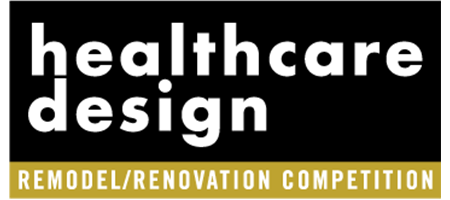University of Maryland Medical System’s logistics center, Baltimore
More than 95 million exam gloves, 3.5 million isolation gowns, 3 million masks, 1 million IV fluid bags, and nearly 8.5 million needles and syringes.
That’s just a sample of the medical supplies that University of Maryland Medical System (UMMS; Baltimore) orders every year for its 11 hospitals and more than 150 facilities, including urgent care clinics, according to a news release.
Currently UMMS, the largest hospital system in Maryland, has space dedicated at each individual care location to process, handle, sterilize, and store medical supplies.
UMMS to centralize supply logistics in Baltimore
Expected to open in 2025, a new 400,000-square-foot logistics operation center in Baltimore will centralize that operation, allowing the organization to improve standardization, reduce waste, and build readiness and preparedness, Jon Burns, chief administrative officer UMMS, says in the news release.
“Additionally, it will create value and long-term savings through inventory management and control, reduced duplication and waste, and less use of non-essential space across our facilities.”
Under construction in the Tradepoint Atlantic industrial park on the east coast of the Port of Baltimore (a site centrally located among the UMMS network), the center will also house pharmacy operations and provide enhanced medical equipment staging and repair.
Medical supply storage, handling
To safely and efficiently handle and sterilize supplies, medications, and equipment, the center requires high-tech solutions such as automated conveyors and robotic analyzers, as well as a robust infrastructure, says Richie Stever, vice president of real estate and construction at UMMS.
For example, “the sterile processing facility features advanced sterilization equipment, including high-capacity autoclaves and low-temperature sterilizers, which are essential for handling delicate instruments that cannot withstand high heat,” he says.
The facility’s operations also dictate specific needs in power, water, heating, ventilation, and air conditioning, such as redundant power supplies and backup generators to ensure uninterrupted operations.
“This is crucial for maintaining the integrity of pharmaceuticals and laboratory specimens, as well as for the continuous operation of sensitive equipment,” Stever says.
Additionally, he adds, the facility employs a sophisticated water purification system which includes reverse osmosis and deionization processes to provide the high-quality water necessary for laboratory and sterile processing functions.
HVAC systems are designed to maintain strict environmental controls, crucial for both the sterile processing and pharmaceutical areas. “These systems include HEPA filtration and precise temperature and humidity controls to create and maintain cleanroom conditions,” Stever says.
Mapping out central supply operations
Flow is another key consideration in the facility’s design, which in part is addressed by the integration of conveyer systems. Aisles that are 10 feet wide in the primary corridors and 8 feet wild in secondary corridors also facilitate the easy and safe movement of biohazards, sterile instruments and medications, and a variety of supplies.
Segregated pathways for different types of materials include a controlled environment for lab samples and a decontamination area for sterile instruments.
Advanced climate control systems ensure the safe storage of temperature-sensitive products and are critical for maintaining the integrity of medical supplies, pharmaceuticals, lab specimens, and sterile instruments.
Medications and supplies will be stored at the center until needed, when they’ll be dispatched to the appropriate medical facility.
Pat Vizzard, vice president of supply chain management for UMMS, says the centralization of these operations takes a burden off the hospitals and facilities in the system, allowing healthcare providers “to be even more focused on managing the logistics around all of the details that go into providing world-class clinical care,” he says.
Robert McCune is senior editor of Healthcare Design and can be reached at [email protected].











